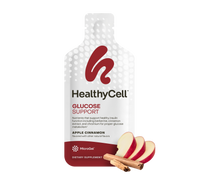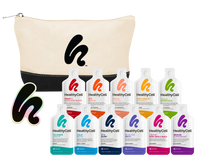Article at a Glance
- Folate is one of the 13 essential vitamins you need in your diet.
- Folic acid is used in many food fortifications and nutrition supplements, but not everyone can metabolize and use this form. Check with your healthcare provider on which form and what dosage is best for your health.
- Pregnant women need to be mindful of their folate intake to avoid birth defects.
If you are or you know someone who is pregnant, it is important for the baby’s health that mom is eating a proper and nutritious diet. Folate is one of the most important nutrients that mom will eat for her growing baby. Without this vitamin or without enough of it, the baby is at risk for serious neural tube defects that can even be life threatening. Read on to understand why folate is so important, where you can get it, and how much you should be receiving.
What Is Folate?
Folate, also known as vitamin B9, is one of the 13 essential vitamins needed in your diet because your body cannot make enough on its own.
Like all B vitamins, folate is water-soluble so it dissolves in water. This dissolution allows your body to easily flush out any excess instead of storing it in your liver or fat tissue.[1]
Why You Need Folate
Folate is essential for many of your body’s physiological functions:[1,2,3]
- Involved in the synthesis of DNA and RNA, which makes folate critical for the growth, maintenance, and repair of your body tissues, especially in times of rapid growth and development such as pregnancy
- Supports cardiovascular health by lowering the levels of the amino acid homocysteine in the body, which can cause cardiovascular disease upon accumulation
- Research suggests the possibilities of folate supporting cognitive health by preventing Alzheimer’s disease as well as depression
Folate VS. Folic Acid
Folate can be found in food sources naturally or synthetically. Natural folate is made up of glutamate molecules and the synthetic form is known as folic acid.[1,2,4] Folic acid is a bioavailable form that is most often used in nutrition supplements and fortified grains, however, your body must convert this form into 5-methyltetrahydrofolate (5-methyl THF) and then into the active form, tetrahydrofolate (THF).[1,2] The different forms of folate are absorbed unequally, therefore absorption is measured in micrograms of dietary folate equivalents (DFE).[1.2]
Although widely found in food sources and supplements, not everyone can absorb folic acid. Some people lack enzymes that are needed to metabolize folic acid and folate, leaving it circulating in their blood because it cannot convert into 5-methyl THF. This condition is called Methylenetetrahydrofolate reductase (MTHFR) deficiency and is linked to cardiovascular disease, cancer, diabetes, neurology, and psoriasis.[7]
Where to Get Folate
Dietary sources rich in folate include:[1,8,9]
- Green, leafy vegetables
- Broccoli
- Oranges
- Avocadoes
- Peanuts
- Beef
You can also get folic acid from fortified foods, such as cereals, pasta, rice, flour, and other grain products or nutrition supplements.[2] Supplementing your diet with folate using MICROGEL™ technology is best for optimal absorption. This delivery system allows you to fully absorb nutrients into your bloodstream and then into your cells, where they work to improve health.
How Much Folate Do You Need?
Everyone is different, and certain factors such as your age, sex, or health will affect your unique nutritional needs differently than someone else. To provide a general guide, the Food and Nutrition Board (FNB) establish the Recommended Dietary Allowance (RDA) to meet the needs of most healthy individuals. Since folate and folic acid are not equally absorbed, the RDA is expressed in micrograms of dietary folate equivalents (DFE).[1,2]
The RDA for folate in both men and women range:[8]
- Infants (0 – 12 months): 65 – 80 mcg DFE/day AI
- Children (1 – 8 years): 150 – 200 mcg DFE/day
- Adolescents (9 – 18 years): 300 – 400 mcg DFE/day
- Adults (19+ years): 400 mcg DFE/day
- Pregnant and nursing women: 500 – 600 mcg DFE/day
Certain groups may need to be more mindful when evaluating their micronutrient needs. If you are pregnant or nursing, be sure to talk with your healthcare practitioner about receiving adequate levels of folate, as it is highly recommended for women to supplement during this stage of life.[8] Folate is required for fetal cellular health, and inadequate intake for these moms and moms-to-be are linked to a higher risk for birth defects such as spina bifida, the most common neural tube defect.[3,8]
If you have a preexisting health condition, concern, or take prescription medication, it’s important to talk with your doctor or registered dietitian about your nutrition, especially when choosing which supplements and dosages are optimal for your health.
Toxicity
Folate has no known toxic side effects as your body does not store water-soluble vitamins. However, too much folate can hinder your body’s ability to recognize vitamin B12 deficiency, which is why a tolerable upper intake level (UL) has been established:[1,2,8]
- Infants (0 – 12 months): –
- Children (1 – 8 years): 300 – 400 mcg/day
- Adolescents (9 – 18 years): 600 – 800 mcg/day
- Adults (19+ years): 1000 mcg/day
- Pregnant and nursing women: 800 – 1000 mcg/day
Folate Deficiency — Are you at risk?
Folate deficiency has been an uncommon nutrient deficiency since the FDA issued the fortification of folate in 1998.[1,2] Although rare, it is still possible to develop a deficiency which can result in megaloblastic, macrocytic anemia that affects red blood cells and causes: fatigue, weakness, irritability, and abnormal heart functions.[2,4,8]
Those at risk for deficiency include:[1,2,8]
- Pregnant women
- People without the MTHFR gene who cannot convert folate into 6S-5-methyltetrahydrofolic acid
- Elderly
- Those with malabsorption syndromes
- Alcoholics
- Smokers
- Individuals with consistent and long-term use of ibuprofen and acetaminophen medications
Folate in Healthycell Products
Bioactive Multi — Best for absorption!
The form of folate contained in Bioactive Multi is calcium L-5-methyltetrahydrofolate. The dosage of folate is 400 mcg, which satisfies 100 percent of the Daily Value (%DV).
The form of folate contained in HealthyCell Pro is calcium L-5-methyltetrahydrofolate. The dosage of folate is 360 mcg in the morning formula and 360 mcg in the evening formula, for a daily dosage of 720 mcg, satisfying 180 percent of the Daily Value (%DV).
The form of folate contained in HealthyCell AM/PM Nutrition is calcium L-5-methyltetrahydrofolate. The dosage of folate is 333 mcg in the morning formula and 333 mcg in the evening formula, for a daily dosage of 666 mcg, satisfying 166 percent of the Daily Value (%DV).
Conclusions and Recommendations
- Folate needs to be present in your diet because your body cannot make enough of this nutrient on its own.
- Folate toxicity is rare, but too much can mask vitamin B12 deficiency
- For optimal folate absorption is use supplements that use MICROGEL™ technology.
[1] McGuire, Michelle, PhD, and Kathy Beerman A., PhD. “Chapter 10 Water-Soluble Vitamins.” Nutritional Sciences: From Fundamentals to Food. 2nd ed. Australia: Thomson/Wadsworth, 2007. 460-464. Print.
[2] “Office of Dietary Supplements – Dietary Supplement Fact Sheet: Folate.” National Institutes of Health. U.S. Department of Health and Human Services, n.d. Web. 23 Dec. 2016.
[3] Higdon, Jane, Ph.D. “Folate.” Linus Pauling Institute. Oregon State University, 2000. Web. 06 Jan. 2017.
[4] Institute of Medicine. 1998. Dietary Reference Intakes for Thiamin, Riboflavin, Niacin, Vitamin B6, Folate, Vitamin B12, Pantothenic Acid, Biotin, and Choline. Washington, DC: The National Academies Press. doi:https://doi.org/10.17226/6015.
[5] Crider, Krista S., Lynn B. Bailey, and Robert J. Berry. “Folic Acid Food Fortification—Its History, Effect, Concerns, and Future Directions.” Nutrients 3.3 (2011): 370–384. PMC. Web. 2 June 2017.
[6] Wright, A., Dainty, J., & Finglas, P. (2007). Folic acid metabolism in human subjects revisited: Potential implications for proposed mandatory folic acid fortification in the UK. British Journal of Nutrition, 98(4), 667-675. doi:10.1017/S0007114507777140
[7] Liew, S. C., and E. D. Gupta. “Methylenetetrahydrofolate Reductase (MTHFR) C677T Polymorphism: Epidemiology, Metabolism and the Associated Diseases.” European Journal of Medical Genetics. U.S. National Library of Medicine, Jan. 2015. Web. 02 June 2017.
[8] Brasaemle, Dawn, PhD. “Folate Lecture.” Rutgers University –Folate. New Brunswick. 2015. Lecture.
[9] Marcason, Wendy, RDN. “What Are B-Vitamins and Folate?” Eat Right. Academy ofNutrition and Dietetics, 14 Dec. 2015. Web. 14 Oct. 2016.




